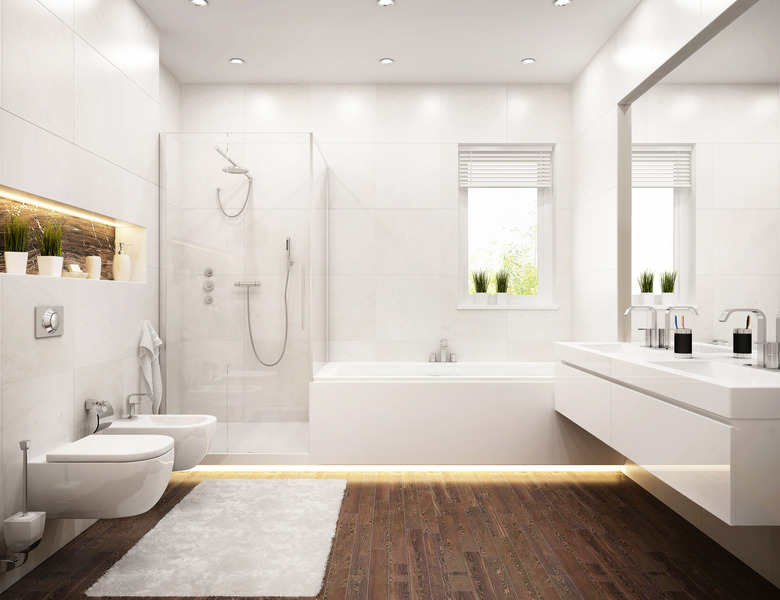Ceramic Vs. China Sinks
If you're renovating your bathroom, you're likely being bombarded with choosing different types of materials for your sink or toilet. When it comes to vitreous china vs. ceramic, you're going to want to consider maintenance, durability and style. Bathroom sinks can come in many different shapes, sizes, materials and colors, so it's essential to consider both style and overall longevity of the material.
Vitreous China vs. Ceramic
Vitreous China vs. Ceramic
The vitreous china vs. ceramic debate is a common one, but to help you decide, you must know the basics of each material. According to Signature Hardware, ceramic is a type of pottery that's made from clay and is hardened by heat. To make ceramic, you have to mix clay, powders and water while shaping them into a form. When the form is shaped, the ceramic is fired in a high-temperature oven or kiln.
People often find themselves debating whether they should go for a porcelain vs. ceramic toilet or vitreous china vs. ceramic toilet. Ceramic is very durable and resistant to scratches and chipping. Another benefit of ceramic is that it's smooth and completely sealed. That means dirt is unable to penetrate the surface.
When cleaning ceramic, you simply wipe off the dirt or dust with a soft dry cloth. When doing a thorough clean, you should use a gentle all-purpose cleaner. Abrasive cleaners could damage more decorative ceramic products.
Vitreous China Material
Vitreous China Material
Vitreous china is made by a coating process that's applied to porcelain. According to The Vitreous Enamellers' Society, coating objects with enamel dates back to Ancient Egypt. The citizens of Egypt would fuse ceramic material to metal objects to create durable products.
The earliest known enamels date back to the 13th century BC during the Mycenaean period. Enamelled objects created in Cyprus were applied on gold, then silver, copper, bronze and later on iron and steel.
According to Bathroom Compare, if you apply an extreme amount of heat to powdered glass, it creates a liquid called vitreous enamel. This glazing technique is used to coat objects, which is how you get a high-gloss finish. When vitreous enamel is used in a bathroom, you'll most likely find it on bathroom sinks and toilets.
Porcelain Made From Ceramic
Porcelain Made From Ceramic
According to Signature Hardware, porcelain is considered the hardest clay on the market. To create porcelain, ceramic material has to be heated in a kiln at extremely high temperatures. When the ceramic is heated in the kiln, the clay becomes less dense and porous.
Buyers love to use porcelain because it has a soft appearance while still being a durable and hard material. Most people like porcelain because it also gives off a more elegant look.
Differences in Material
Differences in Material
When debating whether to purchase vitreous china vs. ceramic, it all comes down to the look you want. Both of these items will cost the same. It's important to note when weighing the vitreous china sink pros and cons that this material works better at resisting spills, scrapes or other mishaps.
According to Bathroom Compare, a vitreous china sink is a popular choice because it's durable and susceptible to everyday bath mishaps. Another pro about vitreous china is that it has sanitary properties that will work well in a bathroom setting.
